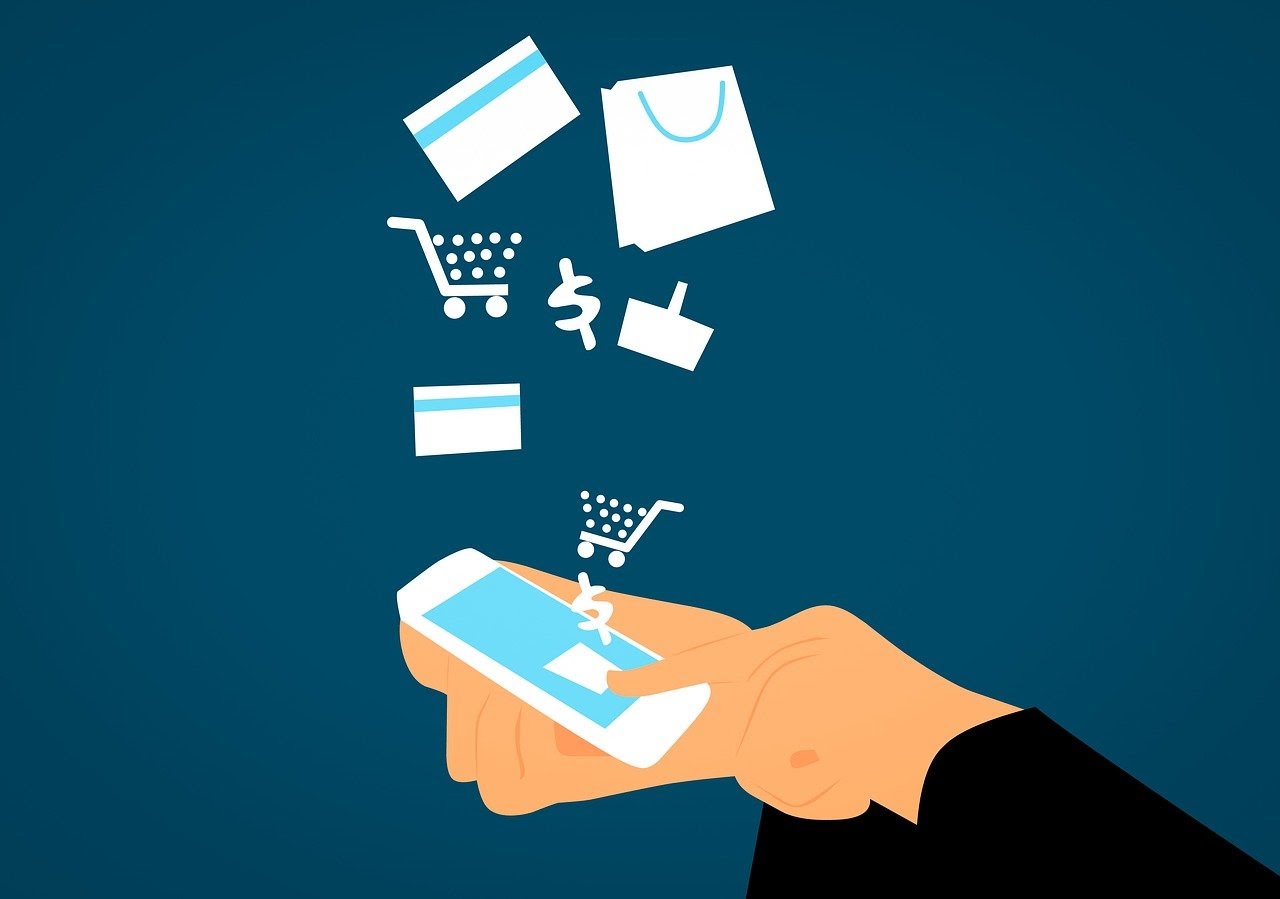- 21 July 2021
- by Christopher Jan Benitez
- Blog
- 0 Comments
Have a mobile e-commerce app?
Does your audience know it exists?
Is it converting users into paying customers?
Are you generating enough data to gain insights to improve your app?
So many questions, so little time!
But don’t panic. This post offers an overview of MUST-HAVE mobile app features to ensure the growth and continued success of your app.
- Quick Registration Process
When you want to improve mobile app engagement, you need to ensure a FRICTIONLESS sign-up and checkout process for users. If the check-out process is taking long enough for them to start having second thoughts, there’s a greater risk of them leaving your app and not completing the transaction.
Aside from e-commerce apps, a seamless registration process is imperative for all apps, even those that allow people to make money from. The goal is to get them on board with an account.
Make sure that you enable the social connect feature to sign up using your prospects’ Facebook or Google account with just a click. Or if you insist on using a contact form builder, make sure just to get their name and email address at best.
- User Interface
Much has been said about good design for mobile apps. However, it bears repeating the importance of developing a user interface that makes operating your app easy for users.
At the same time, this has little to do with how your app looks and feels and more about simplifying the purchase journey for users.
It’s not just making your UX more visually appealing. From a user’s perspective, it should also allow them to browse through your products much more efficiently.
This is where filtering and sorting options come in handy. This functionality allows people to browse through specific categories and types of products available in your mobile app.
Another useful feature related to this is search functionalities such as:
- Autocomplete suggestions to help guide users in the right direction from the search bar.
- Search history so they can see previous searches.
- Voice search so they can say what they want to search for instead of typing it.
Ultimately, these UX features make finding the right product much easier for users, which leads to HIGHER CONVERSIONS. But don’t just stop there. There are plenty of other tips for mobile app UX you can use, such as utilizing a minimalist design to reduce clutter or increasing the font size for better readability.
- Smart Personalization
E-commerce personalization is critical if you want to generate more revenue from your mobile app. It’s no longer enough just to display your products for people to choose from. The majority of consumers need you to explain to them what they want and why they need it.
Therefore, make the option much easier for them by showcasing products in front of them. You can suggest products based on their purchasing history so you can recommend items that they’ll most likely buy.
At the same time, you need to develop apps based on a variety of operating systems available. For example, the US has more Apple users than Android users (53.94% vs 45.71), among other statistics. However, that doesn’t mean that you don’t develop an app for Android users just because the majority are Apple fans. Consider your potential audience from other countries. For all you know, there are more Android users worldwide than Apple lovers!
- Push Notifications
Push notifications are what separates m-commerce from e-commerce. Unlike e-commerce sites that send you emails about the latest products and deals, mobile apps can simply slide in push notification alerts on one’s device about the same updates.
These are less intrusive than emails because they’re shorter and direct-to-the-point. You can even include images in the notifications to increase CTRs.
Finally, emails run the risk of going to the spam folder, especially when most of their messages are flagged as spam by recipients. You won’t have this issue if you implement push notifications on your mobile app. That means people will receive your alerts EVERY. SINGLE. TIME.
- Social Sharing Buttons
If a user sees a product from your app and wants to share it with their network, they’d typically press on Facebook, Twitter, or messaging apps (Whatsapp, FB Messenger) to pass it along. It’s a simple feature to have on each of your product pages that makes sharing content from your app more intuitive.
This could also work as part of your overall digital marketing strategy. You want to track how many shares each of your products generate over time, which you could easily tie to the sales for each.
- Excellent Customer Support
People gravitate towards brands with responsive and accommodating customer support staff. It’s common for companies to have trouble nailing the perfect mobile experience. In this case, it’s a matter of how you respond to customers and help them with their problems.
To do this, you need to be available as much as possible. Aside from having your email address, phone numbers, and contact forms available from the app, you may need to use a chat feature so you can respond to queries much faster.
- Multiple Payment Options
People use different payment gateways for purchasing products and services online. Therefore, you need to accommodate these different options to ensure a continuous revenue stream.
Imagine this scenario:
A user has finally decided to upgrade to a paid version of your app. However, your checkout process only offers to pay using PayPal or a credit card, excluding Stripe, Skrill, or Amazon Pay that this user has readily available. THE HORROR!
Kidding aside, it’s in your best interest to integrate not only multiple payment options but also currencies (USD, CND, AUD, EUR, GRP, etc.). This way, there’s no excuse for people not to buy from your mobile app.
- Order Tracking Updates
This e-commerce mobile app feature is more for your peace of mind.
As the owner, you want to stay updated on what your customers have ordered and the shipment for each. It would even be better if you can track your inventory without having to go to your respective physical stores to know if your stocks are running low.
Some e-commerce platforms have this feature that comes in a mobile app. Install it to see all this information in a few clicks.
This allows you to stay on top of every customer order as it happens. From here, you can notify them about any concerns they have about the package they ordered.
- Collect Reviews and Feedback
This mobile app feature expedites the development and growth in the market, making it ONE OF THE MOST IMPORTANT aspects to focus on.
If your mobile app is relatively new, it’s vital to get as much honest feedback as possible. Since you’re on the up and up, you want to provide an app that caters to the needs of your target audience. And one way to do that is by asking them what they found useful and what needs improvement in your app.
Feedback and reviews also work differently in a marketplace app. Since sellers or service providers can sign up to offer their wares from your app, it could get challenging to police every one of them.
Therefore, using a feedback system allows sellers to find out what they need to improve immediately.
This also alerts buyers from filtering sellers with low user ratings (sounds fair enough!).
Ultimately, by fielding in their suggestions, you can work on making your app better – plain and simple.
And the fact that people would share their thoughts about it means that there’s interest in your app. This should encourage you to keep working on your product development and increase your online presence.
From here, you can further shape your MVP and scale your mobile app business through outsourcing based on customer feedback and response.
- Analytics Tracking
Your mobile app can’t do without an analytics tracker as it helps gives breadth to your mobile app development.
Simply put, you can track and measure the:
- Number of people who downloaded your app
- Signed up for an account, purchased products
- Abandoned their carts
- The conversion rate of your respective product pages
- Revenue over time
- AND MORE!
Once you have this data from your marketing automation tools of choice, interpret the insights before going back to the drawing board. You can find ways to make your app perform better using these metrics to scale your business by converting people into paying customers.
Conclusion
The e-commerce mobile app features listed above should help you achieve three things:
- Get in the minds of your audience (social sharing, quick registration process).
- Turn them into customers (smart personalization, multiple payment options).
- Improve your mobile app’s performance (collect reviews, analytics tracking).
- Logo for your mobile app is essential for marketing therefore choose your logo fonts wisely. Blackletter fonts can help you create modern artistic logo designs.
By implementing these features, you should be able to create the BEST MOBILE APP EVER. Or, if you’re lucky, a sustainable, scalable, and enjoyable app that people will pay money for. Whichever between the two should be fine.
With over 13 years of writing experience, Christopher Jan Benitez specializes in the digital landscape and how it affects our experience. His work can be seen on Monitor Backlinks, DFY Links, Niche Pursuits, and more.




